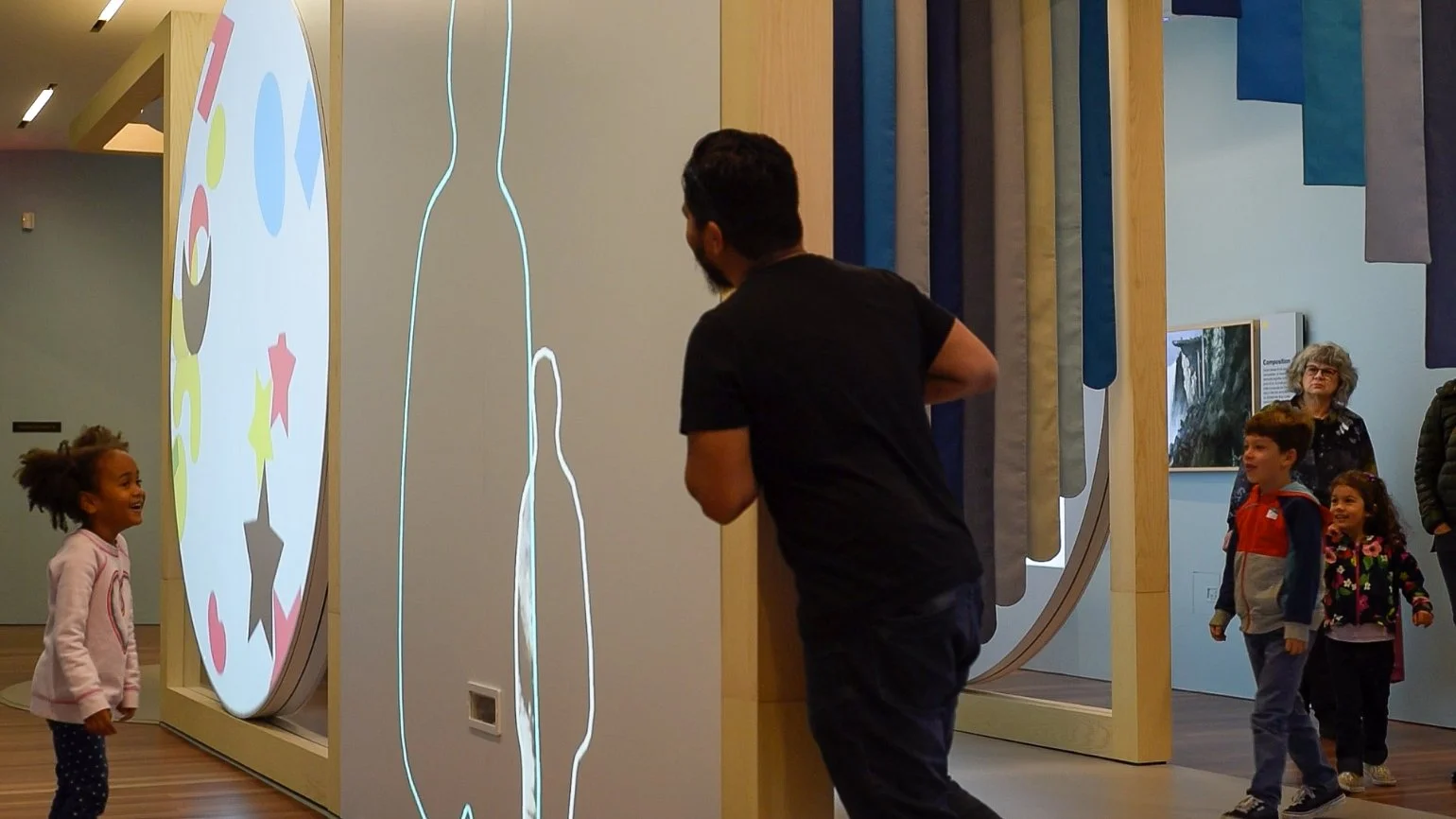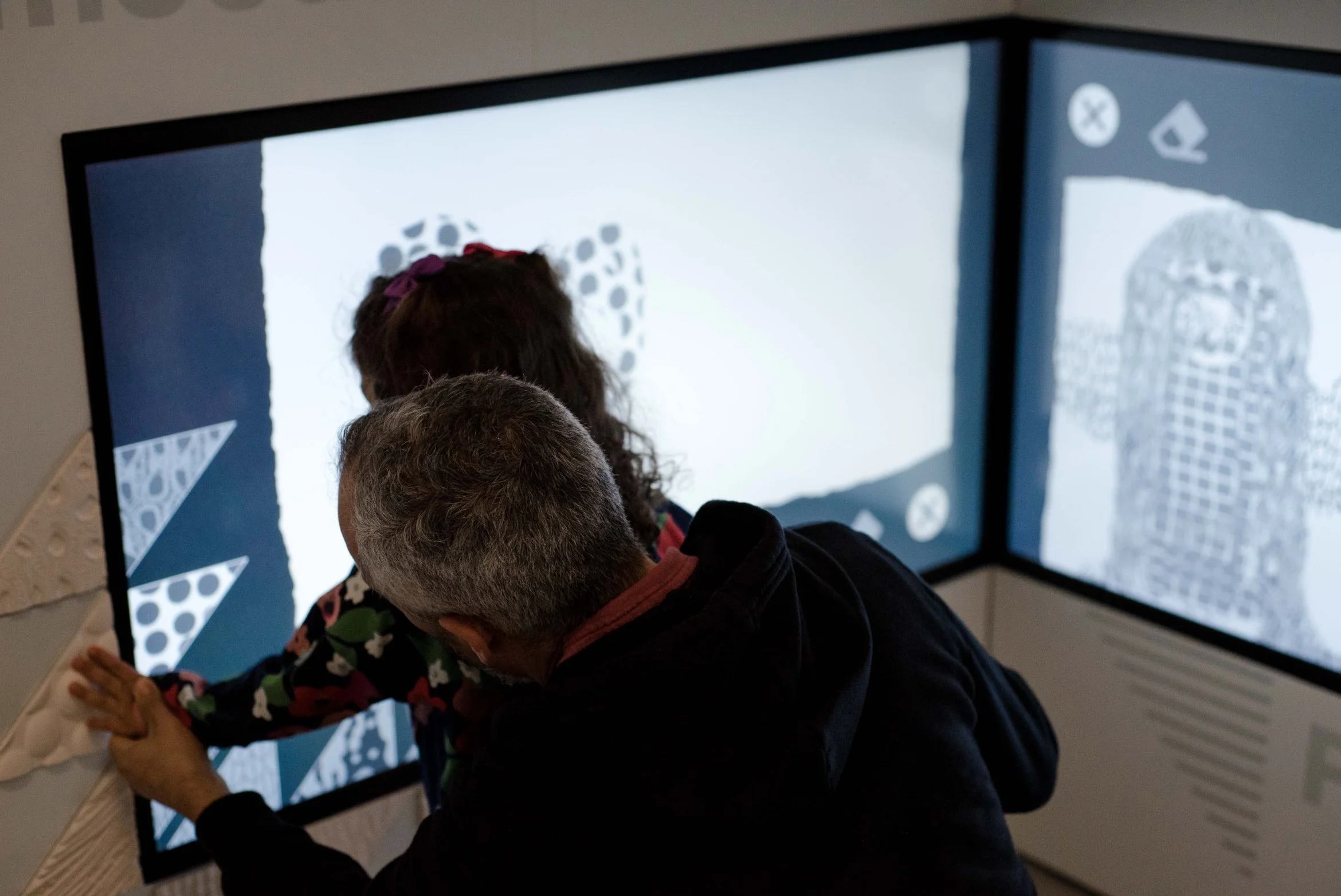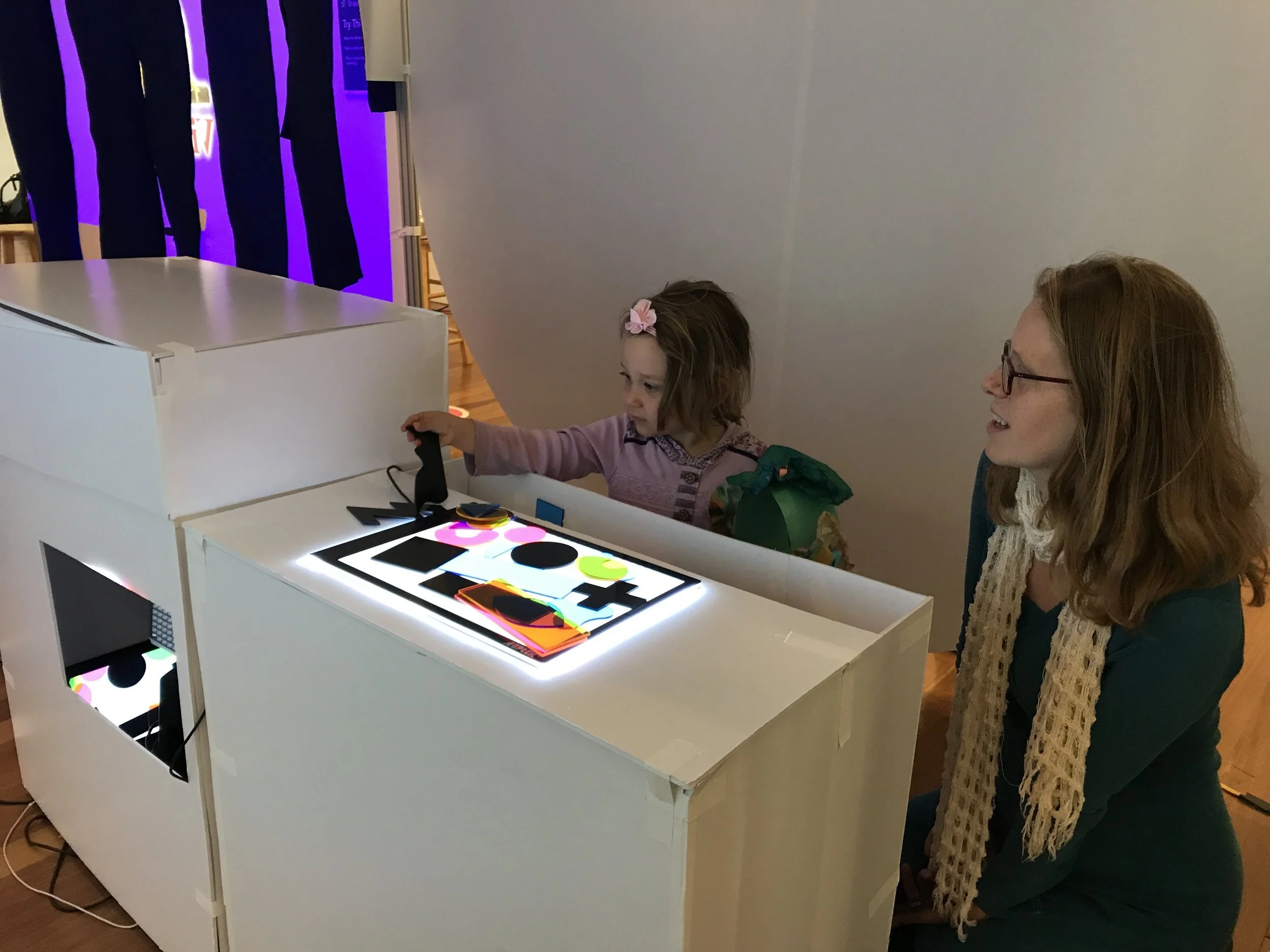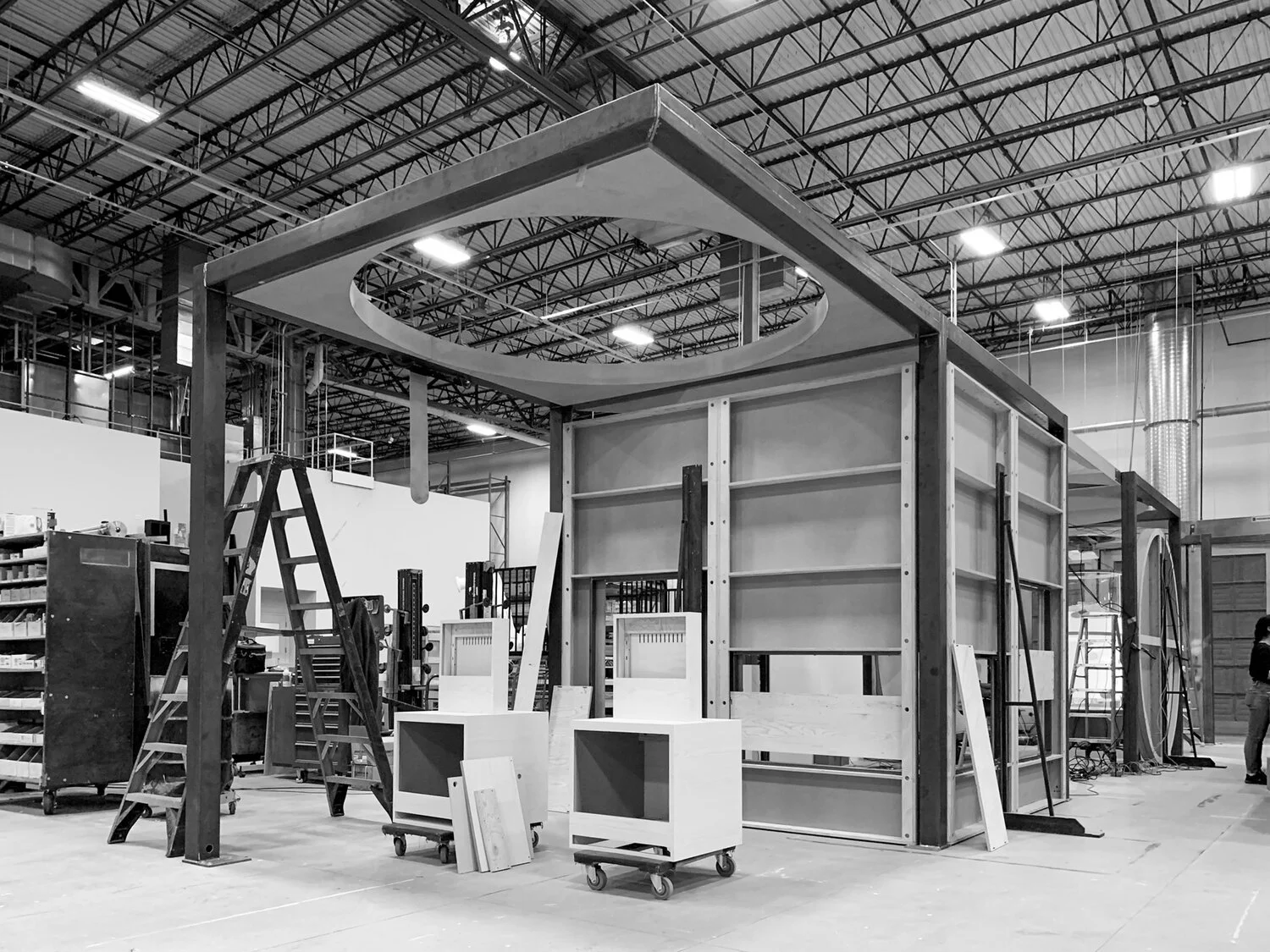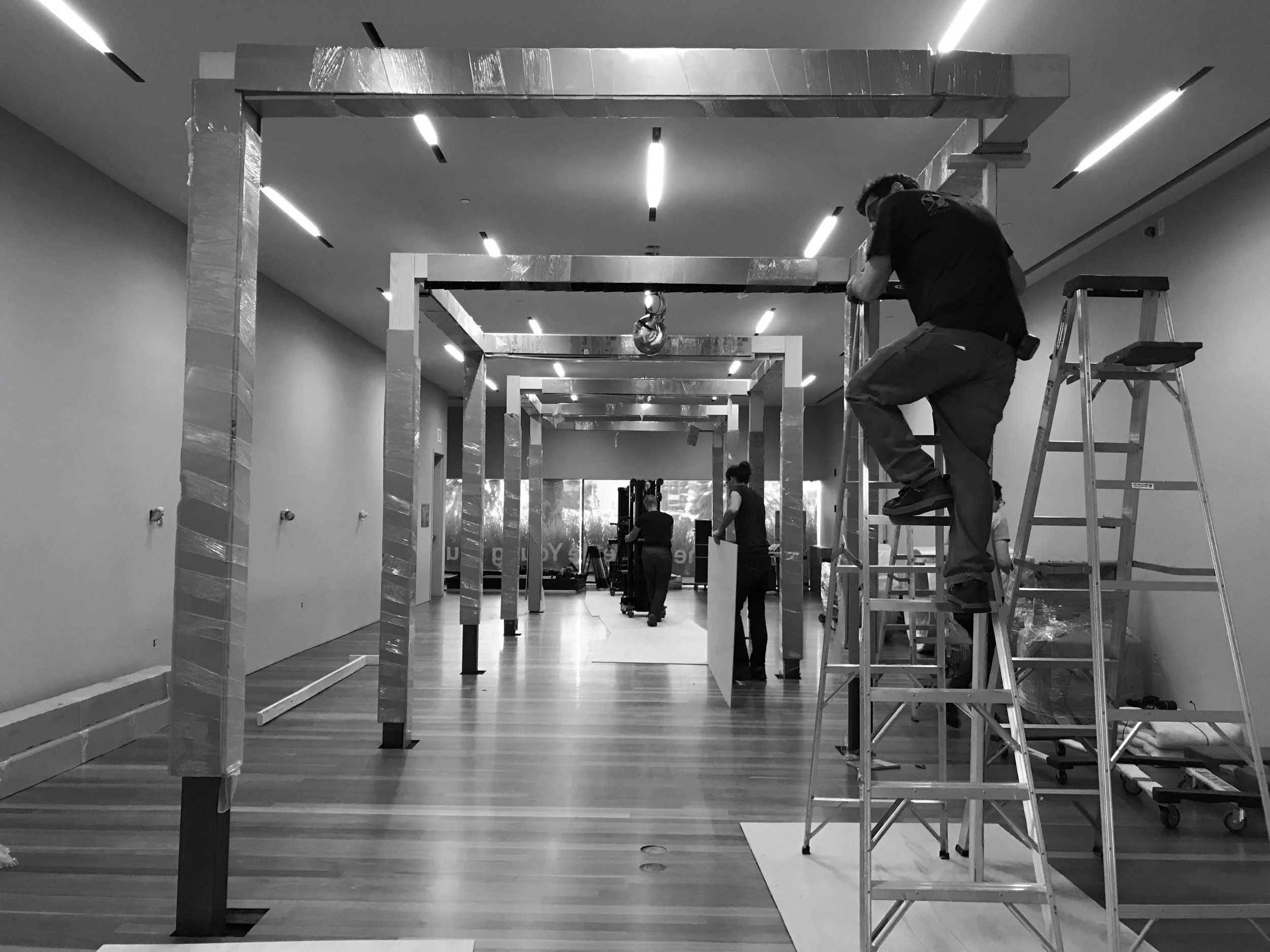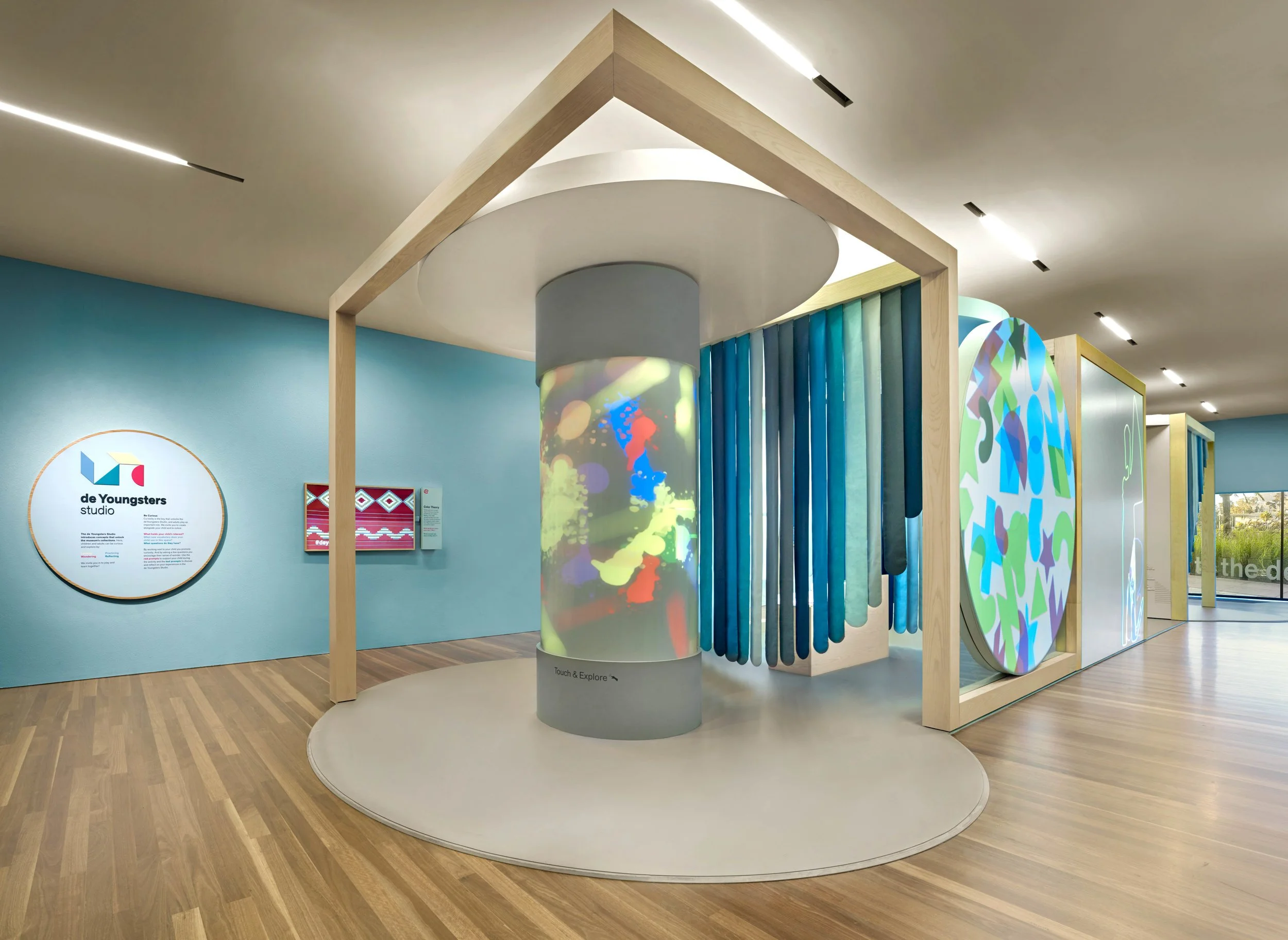de Youngsters Studio
Client: de Young Museum, San Francisco, CA
Role: Producer (Project Manager / Creative Director)
Summary
The de Young Museum asked our team at Tellart to bring their play space dedicated to engaging children’s curiosity through state-of-the-art design and technology to life. Attracting families with young children, this free space is located in the main floor of the museum. The initial concept developed by fuseproject demonstrates five principles of art making: Color, Composition, Shape and Form, Texture and Sculpture. Our team refined the interaction of each module through discovery, prototyping, and testing. The concept posed unique design challenges for us, including the development of a digital color mixing column, as well as the creation of augmented reality stations allowing kids to see the sculptures they make in different materials, sizes and locations around the museum. The result is an exciting new experiential learning environment that engages kids and adults alike.
Awards
IDSA International Design Excellence Awards 2020: Environment, Silver
2019 SEGD Global Design Awards Merit Award
Core77 Design Awards 2019: Visual-Communication
Core77 Design Awards 2019: Built-Environment, Notable
Partners
Design Concept & Branding: fuseproject
Fabrication: Chicago Scenic Studios, 42 Design Fab
Installation: Scenic Inc
Graphic Printing & Installation: Sterling Graphics
This project was in collaboration with de Young Museum’s departments of Education, IT, Marketing, PR, Giving and Facilities, The installation officially debuted to the public on December 1, 2018 and will be open during regular museum hours indefinitely.
Color
A large curved acrylic column stands as the first interaction point of the installation. Here children explore how to blend primary colors by using their hands to splatter digital blobs of paint across the curved surface. Through the use of programmatic light sensor technology the interaction is deployed based on each hand print and movement. The excitement builds as visitors try to burst all the paint blobs or send the paint flying across the surface.
Composition
Working on light tables of two different heights, children experiment with composition by arranging different transparent and solid colored acrylic tiles with shapes inspired by the collections of the Fine Arts Museums of San Francisco. These compositions are simultaneously projected on the walls of the Studio using overhead cameras and projectors, increasing a child’s ability to reflect and explore composition-making.
Shape & Form
In the shape-and-form activity, children work together on both sides of a shared wall to discover the many kinds of shapes that can be made with the human body. Through depth-perception cameras, movement is captured on a double-activated surface to create intersecting silhouettes that, when overlapped, reveal details from recognizable paintings and prints from the FAMSF collections.
Texture
Evocative of texture rubbings, in this module children run their hands across physical textural clay tiles then translate those visually through interactive touchscreens creating multi-layered digital rubbings. Each of the six textures was derived from materials found in FAMSF collections. This activity helps develop a new descriptive vocabulary to make the connection between how something feels and its graphic representation.
Sculpture
The young sculptors in this module build their own sculptures using custom-designed magnetized blocks. After carefully considering how their form looks from all sides, they have a chance to virtually place their newly created sculptures in some of the best-loved locations at the de Young, including directly in a gallery! Using custom made augmented-reality platform, they can further explore size, orientation, and material when placing their artwork in the context of the museum.
Process
“We have received such wonderful feedback from soft launch users who say that the de Youngsters Studio makes the de Young feel significantly more family friendly. It is clear that children and families enjoy the space and are encouraged to engage with the elements of art and be curious. It is an understatement to say that your team has been a pleasure to work with.”
Sheila Pressley, Director of Education, Fine Arts Museums of San Francisco



